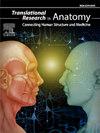在泰国东北部人群中使用尺骨尺寸和体重的性别估计方程的独立验证
Q3 Medicine
引用次数: 0
摘要
人类骨骼遗骸的两性二态性对法医鉴定和考古研究至关重要。本研究开发并验证了泰国东北部人口中使用尺骨尺寸和体重的性别估计方程。材料和方法该研究检查了孔敬大学骨骼收集的600个尺骨(300个男性,300个女性),其中400个用于方程开发,200个用于独立验证。评估最大长度、中轴周长、体重和体重长度比。结果所有变量均存在显著的性别差异。体重的单变量精度最高(88.50%),而周长和体重的结合精度达到90.80%。验证证实了方程的稳定性,训练组和验证组之间无显著差异(90.75%比90.50%,p = 0.77)。该方程鉴别能力强(AUC = 0.959),鉴别女性特异性高(95.00%),鉴别男性敏感性好(86.00%)。17.20的正似然比进一步证实了方法的稳健性。本研究通过验证泰国东北部人口的准确性别估计方法,同时证明了骨量作为性别决定变量的有效性,为法医人类学做出了贡献。本文章由计算机程序翻译,如有差异,请以英文原文为准。
Independent validation of sex estimation equations using ulnar dimensions and weight in a northeastern Thai population
Background
Sexual dimorphism in human skeletal remains is crucial for forensic identification and archaeological studies. This study develops and validates sex estimation equations using ulnar dimensions and weight in a northeastern Thai population.
Materials and methods
The study examined 600 ulnae (300 male, 300 female) from the Khon Kaen University skeletal collection, using 400 for equation development and 200 for independent validation. Maximum length, midshaft circumference, weight, and the weight-to-length ratio were assessed.
Results
Significant differences between sexes were found across all variables. Weight demonstrated the highest single-variable accuracy (88.50 %), while combining circumference and weight achieved 90.80 % accuracy. Validation confirmed equation stability, with no significant difference between the training and validation groups (90.75 % vs. 90.50 %, p = 0.77). The equations showed excellent discriminatory ability (AUC = 0.959), high specificity for female identification (95.00 %), and good sensitivity for male identification (86.00 %). The positive likelihood ratio of 17.20 further confirmed the robustness of the method.
Conclusion
This research contributes to forensic anthropology by validating accurate sex estimation methods for the northeastern Thai population while demonstrating the effectiveness of bone weight as a sex determination variable.
求助全文
通过发布文献求助,成功后即可免费获取论文全文。
去求助
来源期刊

Translational Research in Anatomy
Medicine-Anatomy
CiteScore
2.90
自引率
0.00%
发文量
71
审稿时长
25 days
期刊介绍:
Translational Research in Anatomy is an international peer-reviewed and open access journal that publishes high-quality original papers. Focusing on translational research, the journal aims to disseminate the knowledge that is gained in the basic science of anatomy and to apply it to the diagnosis and treatment of human pathology in order to improve individual patient well-being. Topics published in Translational Research in Anatomy include anatomy in all of its aspects, especially those that have application to other scientific disciplines including the health sciences: • gross anatomy • neuroanatomy • histology • immunohistochemistry • comparative anatomy • embryology • molecular biology • microscopic anatomy • forensics • imaging/radiology • medical education Priority will be given to studies that clearly articulate their relevance to the broader aspects of anatomy and how they can impact patient care.Strengthening the ties between morphological research and medicine will foster collaboration between anatomists and physicians. Therefore, Translational Research in Anatomy will serve as a platform for communication and understanding between the disciplines of anatomy and medicine and will aid in the dissemination of anatomical research. The journal accepts the following article types: 1. Review articles 2. Original research papers 3. New state-of-the-art methods of research in the field of anatomy including imaging, dissection methods, medical devices and quantitation 4. Education papers (teaching technologies/methods in medical education in anatomy) 5. Commentaries 6. Letters to the Editor 7. Selected conference papers 8. Case Reports
 求助内容:
求助内容: 应助结果提醒方式:
应助结果提醒方式:


